Accelerate > Publications
Search this online library featuring the latest FAO publications, issue papers and briefs which offer up-to-date knowledge and innovative insights for SDG acceleration.
Tracking progress on food and agriculture-related SDG indicators 2020
2020
In September 2019, the High Level Political Forum noted that the world is “off track” to meeting the Sustainable Development Goals. This echoed the main finding of the first edition of this report, issued in July 2019, that the world was not going to meet most of the food and agriculture-related SDG targets by 2030. Now, due to COVID-19, an unprecedented health, economic and social crisis is threatening lives and livelihoods, making the achievement of these targets even more challenging.

Codex and the SDGs: How participation in Codex Alimentarius supports the 2030 Agenda for Sustainable Development
2020
This document explains how Codex work supports countries to achieve these particular SDGs, which are interconnected with other SDGs and the 2030 Agenda generally. It also highlights how the Codex Trust Fund supports developing and transition economy countries to build food safety capacity, which helps equip them to pursue the SDGs more successfully.

Factsheets on the 21 SDG indicators under FAO custodianship: A highlight of the main indicators with the greatest gaps in country reporting
2020
This booklet introduces a series of individual factsheets that contain the main characteristics of each of the 21 SDG indicators under FAO custodianship, including their main methodological approach, relevance for the target, limitations, main challenges for country reporting and ways to overcome these.
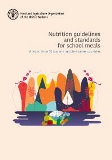
Nutrition guidelines and standards for school meals - A report from 33 low and middle-income countries
2019
Setting nutrition guidelines and standards has been recommended internationally to ensure that school meals are in line with children’s nutrition needs and adequate to their context. This report provides a descriptive overview of the situation of school meal nutrition guidelines and standards in 33 low and middle-income countries as reported through a global survey.
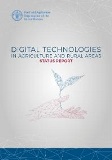
Digital technologies in agriculture and rural areas - Status report
2019
This report aims to identify the different scenarios where the process of digital transformation is taking place in agriculture. This identifies those aspects of basic conditions, such as those of infrastructure and networks, affordability, education and institutional support.

Stepping up school-based food and nutrition education
2019
School-based food and nutrition education (SFNE) represents a crucial opportunity to reach children, families and the broader school community to foster lasting healthy food practices and capacities. The consultation on “Stepping up School-based Food and Nutrition Education: Exploring Challenges, Finding Solutions and Building Partnerships,” was the first of its kind. This report provides a description of the consultation, the results achieved and the recommendations agreed on by the experts.

The international Code of Conduct for the sustainable use and management of fertilizers
2019
The International Code of Conduct for the Sustainable Use and Management of Fertilizers or Fertilizer Code was developed to increase food safety and the safe use of fertilizers. The Fertilizer Code aims to address issues of global importance, thereby contributing to the implementation of some of the Sustainable Development Goals (SGDs).
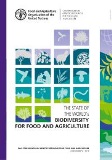
The State of the World's Biodiversity for Food and Agriculture
2019
The State of the World’s Biodiversity for Food and Agriculture presents the first global assessment of biodiversity for food and agriculture worldwide. Biodiversity for food and agriculture is the diversity of plants, animals and micro-organisms at genetic, species and ecosystem levels, present in and around crop, livestock, forest and aquatic production systems.
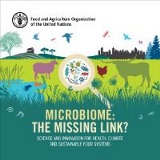
Microbiome: The missing link? Science and innovation for health, climate and sustainable food systems
2019
Unhealthy diets now pose a greater risk to morbidity and mortality than unsafe sex, alcohol, and drug and tobacco use combined. They are at the root of the global obesity and diet-related non-communicable disease (NCD) pandemic. The ways of food production that lead to these unhealthy diets also pose a major threat to climate stability and ecosystem resilience, and constitute the most important driver of environmental degradation and natural resources depletion.
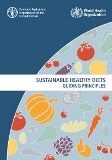
Sustainable healthy diets - Guiding principles
2019
This publication aims to support the efforts of countries as they work to transform food systems to deliver on sustainable healthy diets, contributing to the achievement of the SDGs at country level, especially Goals 1 (No Poverty), 2 (Zero Hunger), 3 (Good Health and Well-Being), 4 (Quality Education), 5 (Gender Equality) and 12 (Responsible Consumption and Production) and 13 (Climate Action).

Transforming Food and Agriculture to Achieve the SDGs: 20 interconnected actions to guide decision-makers
2019
These guidelines are primarily directed towards decision-makers responsible for integrating the goals and targets of the 2030 Agenda for Sustainable Development into national policies and programmes. They will be of value to public and private actors, including investors, researchers and technical practitioners, involved in the broad area of food and agriculture, and rural development.
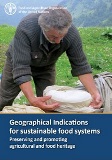
Geographical Indications for sustainable food systems - Preserving and promoting agricultural and food heritage
2019
A geographical indication (GI) is a label that applies to products with specific quality, reputation or other characteristics resulting from their geographical origin. These specific characteristics can be the result of natural or human factors. GIs are protected by intellectual property rights (IPR) according to the World Trade Organization agreement on Trade-Related Aspects of Intellectual Property Rights (TRIPS) and the Geneva Act.

The State of Food and Agriculture 2019 - Moving forward on food loss and waste reduction
2019
The need to reduce food loss and waste is firmly embedded in the 2030 Agenda for Sustainable Development. Food loss and waste reduction is considered important for improving food security and nutrition, promoting environmental sustainability and lowering production costs. However, efforts to reduce food loss and waste will only be effective if informed by a solid understanding of the problem.
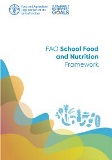
FAO School Food and Nutrition Framework
2019
The FAO School Food and Nutrition Framework aims to support governments and institutions in developing, transforming or strengthening their school policies, programmes and other initiatives for an enhanced and synergistic impact on diets, child and adolescent nutrition, community socioeconomic development and local food systems.

FAO framework on rural extreme poverty: Towards reaching Target 1.1 of the Sustainable Development Goals
2019
FAO has established a Corporate Framework on Rural Extreme Poverty to orient and bring to bear the relevant work of the Organization towards reaching Target 1.1 of the SDGs. Eliminating extreme poverty is directly linked to eliminating hunger (SDG 2), as well as other SDGs. When the extreme poor have means to a better life, they no longer suffer from hunger and can invest in a better future for their families and communities

Addressing the climate change and poverty nexus - A coordinated approach in the context of the 2030 Agenda and the Paris Agreement
2019
Climate change threatens our ability to ensure global food security, eradicate poverty and achieve sustainable development. About 736 million people live in extreme poverty, and the global response to climate change today will determine how we feed future generations.
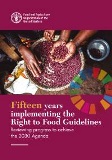
Fifteen years implementing the Right to Food Guidelines - Reviewing progress to achieve the 2030 Agenda
2019
The Right to Food Guidelines provide practical guidance on ways to implement the right to adequate food in a wide range of policy and programmes areas through a human rights-based approach. Since the adoption of the Right to Food Guidelines, FAO and its partners have produced a wealth of tools, strengthened capacity, and facilitated multi-stakeholder dialogues worldwide.

The State of Food Security and Nutrition in the World 2019 - Safeguarding against economic slowdowns and downturns
2019
This year’s report presents evidence that the absolute number of people who suffer from hunger continues to slowly increase. The report also highlights that food insecurity is more than just hunger. For the first time, the report provides evidence that many people in the world, even if not hungry, experience moderate food insecurity as they face uncertainties about their ability to obtain food and are forced to compromise on the quality and/or quantity of the food they consume.
Tracking progress on food and agriculture-related SDG indicators 2019: A report on the indicators under FAO custodianship
2019
In the first digital SDG progress report of its kind, FAO presents key data and trends for 18 of the 21 indicators under its custodianship. The evidence available to date for these targets, however, paints a grim picture. The world is not on track to meeting the overwhelming majority of SDG targets related to sustainable agriculture, food security and nutrition.

The State of Agricultural Commodity Markets 2018 - Agricultural trade, climate change and food security
2018
This edition of The State of Agricultural Commodity Markets focuses on the complex and underexplored intersection between agricultural trade, climate change and food security. The report makes an important contribution to the policy debates on climate change adaptation and mitigation under the Paris Agreement and the multilateral agricultural trade rules.
Browse by SDG
- SDG1: No Poverty
- SDG2: Zero Hunger
- SDG3: Good Health & Well-being
- SDG4: Quality Education
- SDG5: Gender Equality
- SDG6: Clean Water & Sanitation
- SDG7: Affordable and Clean Energy
- SDG8: Decent Work and Economic Growth
- SDG9: Industry, Innovation and Infrastructure
- SDG10: Reduced Inequalities
- SDG11: Sustainable Cities and Communities
- SDG12: Responsible Consumption and Production
- SDG13: Climate Action
- SDG14: Life Below Water
- SDG15: Life on Land
- SDG16: Peace, Justice and Strong Institutions
- SDG17: Partnerships for the Goals
Browse by Better
Browse by Priority Area
- Innovation for Sustainable Agriculture Production
- Blue Transformation
- One Health
- Small-Scale Producers' Equitable Access to Resources
- Digital Agriculture
- Healthy Diets for All
- Nutrition for the Most Vulnerable
- Safe Food for Everyone
- Reducing Food Loss and Waste
- Transparent Markets and Trade
- Climate Change Mitigating and Adapted Agrifood Systems
- Bioeconomy for Sustainable Food and Agriculture
- Biodiversity and Ecosystem Services for Food and Agriculture
- Achieving Sustainable Urban Food Systems
- Gender Equality and Rural Women's Empowerment
- Inclusive Rural Transformation
- Agriculture and Food Emergencies
- Resilient Agrifood Systems
- Hand-in-Hand Initiative
- Scaling up Investment
